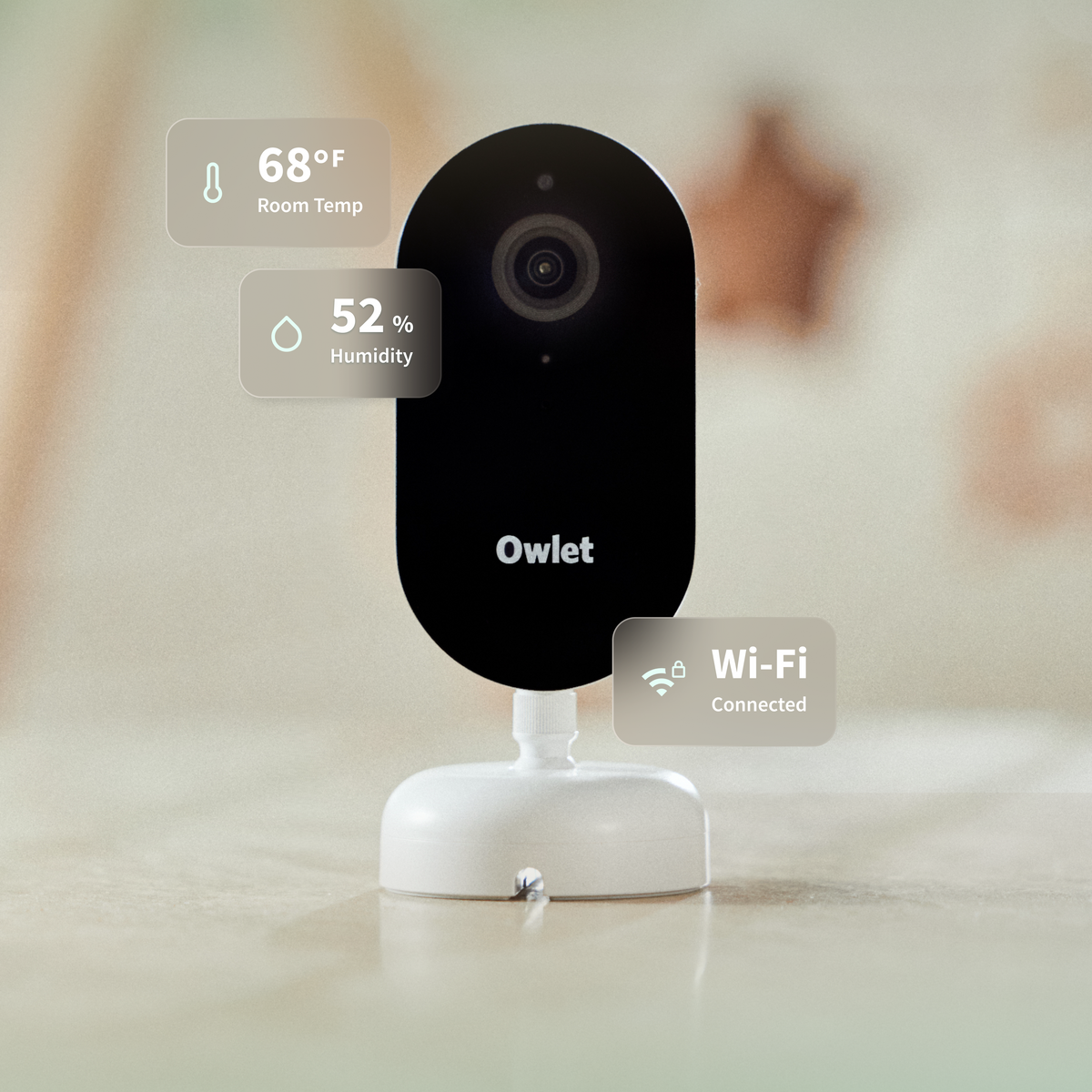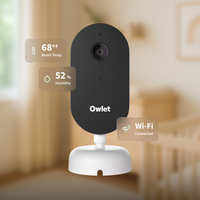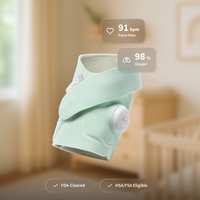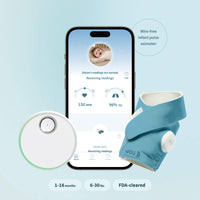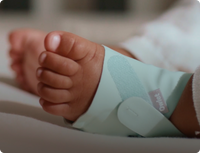By. Dr. Carmel Harrington
“Alone we can do so little; together we can do so much.” — Helen Keller
It’s wonderful to again have the opportunity to speak with the Owlet family.
Since my last post almost a year ago much has happened and yet, as always, it is not happening quickly enough. The rate of sudden unexpected death in infancy (SUDI) in America remains at 0.9 per 1000 live births and this has been a constant since around 1999. And many days I feel I cannot work fast enough.
As you know, in 2022 our group published a study that showed that the enzyme, Butyrylcholinesterase (BChE), measured in dried blood spots (DBS) taken 2-3 days after birth, was significantly lower in babies who subsequently died of SIDS. This was the first study to find a biochemical marker, at birth, which appeared to differentiate SIDS infants from surviving infants.
At the time we hypothesised that this decreased enzyme activity represented an inherent vulnerability of the SIDS infants. However, despite showing a high sensitivity to a SIDS vulnerability (88% of SIDS infants exhibited this decreased enzyme level) it could not be used as a test as it had poor specificity. This is because about 20% of all infants have a decreased level of this enzyme at birth.
Nevertheless the finding was significant as it implicated that a specific system may be involved in the SIDS event. But, to fully understand the implications of this new finding, further studies were required.
To contextualise what further studies were required I need to explain a little more fully.
It is currently considered that SIDS is not due to a single factor but is multi-factorial in origin and a useful means for organising SIDS knowledge is the triple-risk model, which proposes that SIDS occurs when three factors occur simultaneously: 1) a vulnerable infant, 2) a critical developmental period in homeostatic control, and 3) an exogenous stressor(s). Despite significant inroads into the understanding of the risk factors that lead to an infant being vulnerable to SUDI, we are still unable to identify infants with a specific vulnerability.
Autonomic dysfunction and decreased arousability are related and have long been considered candidates for this vulnerability. Data derived over the last 30 years show that the brainstems of infants who died from SIDS exhibit abnormalities in several major neurotransmitter and receptor systems, primary among these being the autonomic nervous system.
The major neurotransmitter of the autonomic nervous system is acetylcholine and the importance of our BChE finding is that this enzyme actually controls the amount of acetylcholine that is in active use. Which in turn implies, indirectly, the healthy activity of the autonomic nervous system and arousal.
So when we found a low level of this enzyme in our SIDS infants we knew it was important, but we also realised that we needed to understand more about the autonomic nervous system and specifically more about the cholinergic system (which is intimately involved in the arousal process).
But to do this we needed funding, and this is why I am so very grateful to the Owlet community. Without the generosity of Owlet and its families the progress over the last 6 months would not have been possible. During this time we have been busy developing a test that we think will not only provide the required sensitivity but also the specificity to be used as a screening test for a vulnerability to SIDS.
This has been no easy task as we do not get to work on whole blood but rather dried blood spots. And we do this because most infants undergo a heel-prick test at birth, with the blood spots stored on filter paper. As a result we have had to develop an extraction method from these spots that can reliably detect and quantify specific proteins and metabolites of the cholinergic system. Additionally this test ultimately needs to be suitable for population testing, which means it must be a fast throughput and relatively inexpensive.
And we are cautiously pleased at how far we have come with this work. Of course this research never moves fast enough for me but so far we have managed to bed down the methodology for a number of metabolites and are in the final stages of working out the best way of measuring certain proteins. I am hopeful that this will be finished within the next 4-6 weeks.
Once we have successfully finalized the test we plan to use it to analyse the dried blood spots of SIDS infants and controls to see if this newly developed test will sufficiently differentiate our SIDS infants from matched controls. The overall objective being the ascertainment of a test that has the required specificity and sensitivity for the determination of an infant’s vulnerability to SIDS.
This next step, testing the dried blood spots of SIDS infants, is somewhat complex and time consuming. Many permissions are required to test these spots, and this can take a lot of time. We are nonetheless hopeful that this can be achieved within the next 12 months, at which stage we may well have a preliminary answer to our fundamental inquiry – do SIDS infants have an inherent vulnerability that is detectable and measurable at birth?
If the answer to this is yes, the second stage of the research needs to be undertaken with alacrity, and this involves the establishment of normal population ranges. This will require the evaluation of thousands of dried blood spots, but we will talk about this in my next update.
For now, I wish to thank you all for your amazing generosity in allowing this work to come this far. The tragedy of SIDS is not one person’s problem, but one of the whole community. And I firmly believe that as a community, standing shoulder to shoulder, we will eventually be able to prevent these tragic deaths.
I am so very grateful to Owlet, Knox Blocks, Briggs & Barrett Project and the entire Owlet Cares community for bringing our communities together, because together we can.
Author Bio:

Dr. Carmel Harrington (BSc, PhD, LLB, DipEd)
Dr. Harrington, a former Lawyer, originally trained as a biochemist. Following the death of her son, Damien, from SIDS, she committed her life to trying to find the cause of his death. She commenced her PhD in 1996 investigating autonomic function in infants at risk of SIDS. In 2022 she found that 88% babies who died of SIDS had a lower level of an enzyme connected with autonomic function. Her study was the first to identify a biomarker in SIDS infants prior to their death and presents a possibility that with further research infants at risk of SIDS could be identified in their newborn period. She is currently planning her future studies which will include proteomic and metabolomic investigations with her ultimate aim being the development of a test that will effectively detect an infant’s vulnerability to SIDS, and which could be integrated into newborn screening programs.
*The quotes, stories, and experiences included here are those of the individuals and are not representative of Owlet's views or claims about our product. Individuals were not paid and did not submit their information as part of any paid promotion by Owlet. The content provided on this blog is intended for informational and educational purposes only. It is not a substitute for professional medical advice, diagnosis, or treatment. Always seek the advice of a qualified healthcare provider with any questions you may have and to learn more about your child's specific needs.
